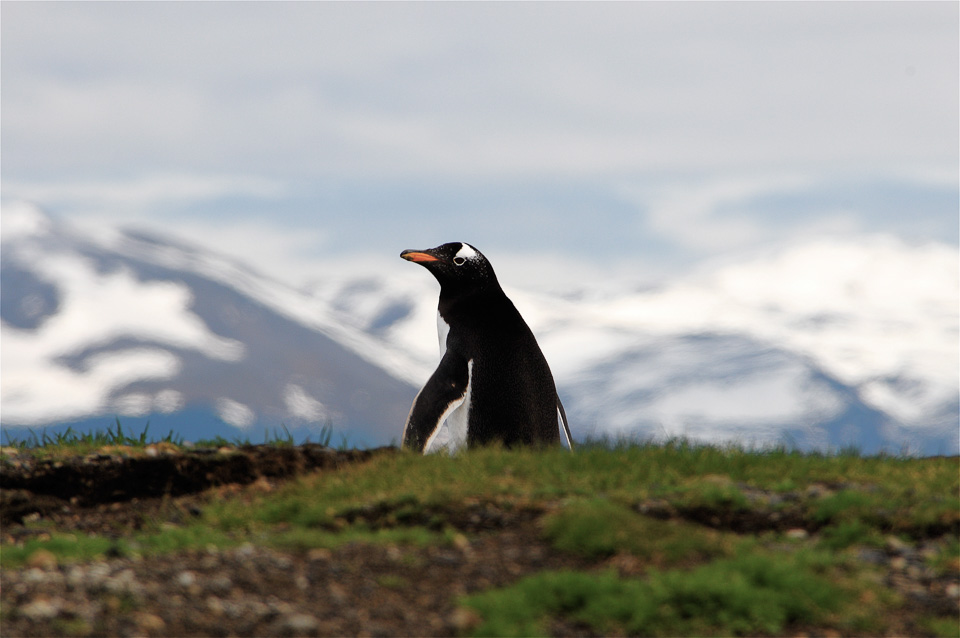|
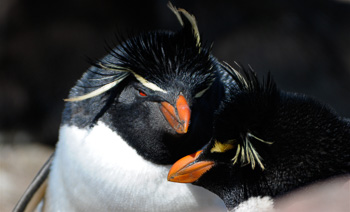 IN DARWIN’S FOOTSTEPS: PATAGONIA’S IN DARWIN’S FOOTSTEPS: PATAGONIA’S
ATLANTIC COAST, LOS GLACIARES
NATIONAL PARK, CAPE HORN &
TIERRA DEL FUEGO
November 5-23, 2016 18 Days/17 Nights
Carol & Carlos Passera, Geoff Hammerson,
Wendy Shattil & Bob Rozinski,
Audrey Benedict and Guest Lecturers
Permission to board! The year is 1831 and
Captain Robert Fitzroy, commander of the HMS Beagle, i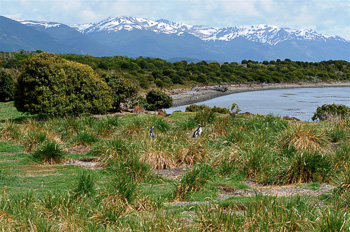 s welcoming the newly appointed
naturalist, 22-year-old Charles Darwin, to board
her Majesty’s ship. Fitzroy’s instructions from the
Admiralty are to continue the work begun on the
Beagle’s first voyage and to survey the southern
half of South America. Both men were inspired by
naturalist Alexander von Humboldt’s epic travels
in South America and are determined that their
expedition exceed expectations. Darwin’s tasks as
ship’s naturalist are to make detailed geological
and biological observations and to collect
specimens throughout the voyage. As the Beagle
set sail for the Canary Islands and South America,
neither man could have imagined that their five year
circumnavigation of the globe would become
the most important scientific voyage of all time. s welcoming the newly appointed
naturalist, 22-year-old Charles Darwin, to board
her Majesty’s ship. Fitzroy’s instructions from the
Admiralty are to continue the work begun on the
Beagle’s first voyage and to survey the southern
half of South America. Both men were inspired by
naturalist Alexander von Humboldt’s epic travels
in South America and are determined that their
expedition exceed expectations. Darwin’s tasks as
ship’s naturalist are to make detailed geological
and biological observations and to collect
specimens throughout the voyage. As the Beagle
set sail for the Canary Islands and South America,
neither man could have imagined that their five year
circumnavigation of the globe would become
the most important scientific voyage of all time.
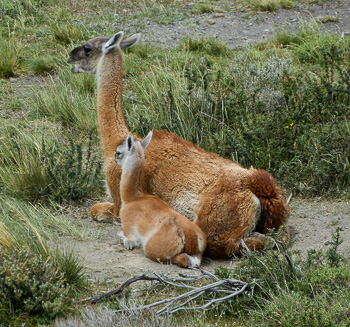 Charles Darwin combined unique abilities as a
naturalist with an intuitive sense of geology—
puzzle-solving skills that enabled him to become
one of the world’s great scientists. After returning to England, Darwin spent 20 years working
through the Beagle’s journals and his own notebooks,
looking at specimens, conducting experiments,
and corresponding with colleagues.
Despite the fact that Darwin and Alfred Russel
Wallace jointly presented their theory of natural
selection to the Linnean Society in 1858, Darwin
waited until 1869 to publish On the Origin of
Species. His now-famous book set forth the
framework for his theory of evolution—the
multi-branched “tree of life”—and described the
biological mechanisms responsible for the diversity
of life on earth. This dazzling leap forward in
science—the Darwinian Revolution—was also an
unequivocal rebuttal of creationism. Darwin’s
fossil evidence for pushing back earth’s antiquity
shocked not only Europe’s most influential clerics
but also many of the leading geologists of his day. Charles Darwin combined unique abilities as a
naturalist with an intuitive sense of geology—
puzzle-solving skills that enabled him to become
one of the world’s great scientists. After returning to England, Darwin spent 20 years working
through the Beagle’s journals and his own notebooks,
looking at specimens, conducting experiments,
and corresponding with colleagues.
Despite the fact that Darwin and Alfred Russel
Wallace jointly presented their theory of natural
selection to the Linnean Society in 1858, Darwin
waited until 1869 to publish On the Origin of
Species. His now-famous book set forth the
framework for his theory of evolution—the
multi-branched “tree of life”—and described the
biological mechanisms responsible for the diversity
of life on earth. This dazzling leap forward in
science—the Darwinian Revolution—was also an
unequivocal rebuttal of creationism. Darwin’s
fossil evidence for pushing back earth’s antiquity
shocked not only Europe’s most influential clerics
but also many of the leading geologists of his day.
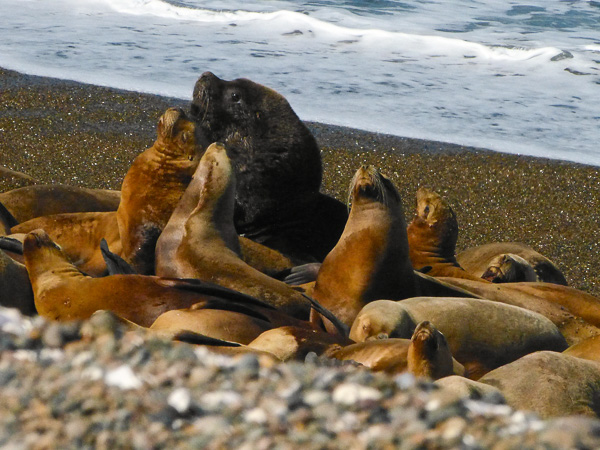
It has been 185 years since the HMS Beagle
sailed from England’s shores to chart new waters
in our understanding of biodiversity. In 2007,
Cloud Ridge inaugurated the first of three groundbreaking
voyages of discovery “In Darwin’s
Footsteps.” This year’s land and sea-based
journey traces Charles Darwin’s explorations
along the remote Atlantic coastline of Patagonian
Argentina and concludes in one the world’s most
beautiful wilderness areas—Tierra del Fuego.
Beginning in Buenos Aires, we tour the city that
Darwin admired as much for its Spanish-Colonial
architecture as for the exotic loveliness of its
women. Flying to Comodoro Rivadavia, we head
first to Bahia Bustamante and Malaspina Bay.
From our beachfront cottages, we’ll explore this
wild coastline, watching for southern right whales
and killer whales, hiking through a petrified
“forest” of 60-million-year-old trees, and
photographing noisy colonies of South American
sea lions, Magellanic penguins, kelp gulls,
imperial cormorants, and royal terns.
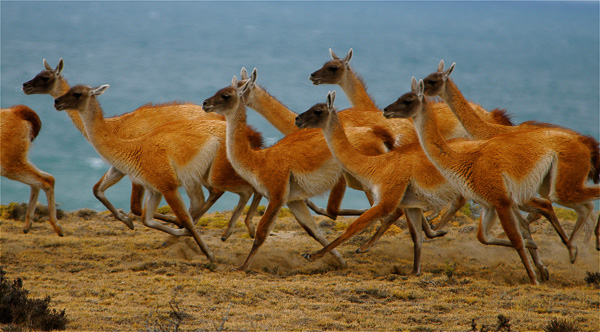
Heading south to the remote coastal region of
Puerto Deseado, we’ll watch for guanacos,
rheas, and other wildlife. This starkly beautiful
area offered Darwin a unique sampling of
Patagonia’s biodiversity. At least 134 species
of birds are recorded, including both Magellanic
and rockhopper penguins, Darwin’s rheas, elegant
crested tinamous, burrowing parrots, blacknecked
swans, and Andean condors. Of the 28
mammal species recorded, we should have good
looks at sea lions, elephant seals, guanacos, maras, hairy armadillos and perhaps catch a
glimpse of a Patagonian skunk or a gray fox.
-CRN_2016_brochure.jpg)
Red-legged
Cormorants (MH)
The remarkable estuary system here is home to a
diversity of marine wildlife, including dolphins
and noisy colonies of red-legged cormorants.
Boating to Isla de los Pajaros, we’ll immerse
ourselves in a colony of Magellanic penguins,
snowy sheathbills, blackish oystercatchers, and
giant petrels—a total sensory experience! If the
seas permit, a landing at Isla Penguino gives us
the chance to photograph both Magellanic and
rock hopper penguins. We’ll also watch for the
predatory skuas and petrels that opportunistically
patrol these colonies. Gusty winds may give us
the gift of black-browed albatrosses soaring over
the waves. These seascapes and famous mariner’s
landmarks like Cabo Blanco and Tower Rocks are
featured in the paintings of Conrad Mertens, the
Beagle’s artist. No matter how remote these landscapes
may seem to us,“nowhere is a place”—
emboldened with the sea’s magic.
Traveling inland across the vast Patagonian
steppe, we visit Petrified Forest National Park,
where Darwin found the fossilized remnants of a
once-flourishing tropical forest. 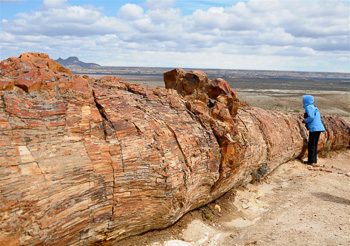 His journal devotes
several pages to nearby San Julian and the
Rio Santa Cruz valley, where he discovered a
fossilized seashore extending more than 500
miles along the coast and inland to an elevation
of 3,000 feet. Attempting to solve these and other
geologic mysteries, Darwin proposed that the
southern portion of South America must have
been massively uplifted during “some epoch of extreme violence!” It would take geologists
another 100 years to realize that Darwin’s
dynamic earth perspective—mountains rising,
climates changing—paved the way for our
modern understanding of the forces of plate
tectonics, continental drift and mountain-building. His journal devotes
several pages to nearby San Julian and the
Rio Santa Cruz valley, where he discovered a
fossilized seashore extending more than 500
miles along the coast and inland to an elevation
of 3,000 feet. Attempting to solve these and other
geologic mysteries, Darwin proposed that the
southern portion of South America must have
been massively uplifted during “some epoch of extreme violence!” It would take geologists
another 100 years to realize that Darwin’s
dynamic earth perspective—mountains rising,
climates changing—paved the way for our
modern understanding of the forces of plate
tectonics, continental drift and mountain-building.
Darwin marveled at the braided network of rivers
the men encountered as they explored the arid
steppe. 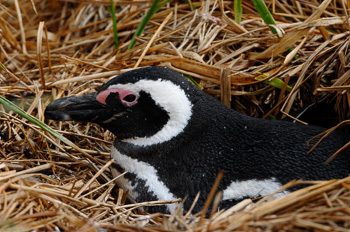 Guessing that meltwater torrents from
enormous glaciers in the high Andes must feed
these rivers, Darwin and Fitzroy embarked on a
19-day small boat expedition up the Rio Santa
Cruz. Having misjudged the distances and the
supplies needed, the men were forced to turn
back. In 1876, naturalist Perito Moreno would
discover the Santa Cruz’s icy stronghold—today’s
Los Glaciares National Park. This UNESCO
World Heritage Site embraces a giant ice cap that
sits astride the spectacular spine of the Andes and
feeds 47 glaciers. As Darwin surmised, meltwater
from 13 of these glaciers flows toward the
Atlantic Ocean. Darwin will be with us in spirit as
we explore the park and discuss the impacts of
global warming on the world’s glaciers. Guessing that meltwater torrents from
enormous glaciers in the high Andes must feed
these rivers, Darwin and Fitzroy embarked on a
19-day small boat expedition up the Rio Santa
Cruz. Having misjudged the distances and the
supplies needed, the men were forced to turn
back. In 1876, naturalist Perito Moreno would
discover the Santa Cruz’s icy stronghold—today’s
Los Glaciares National Park. This UNESCO
World Heritage Site embraces a giant ice cap that
sits astride the spectacular spine of the Andes and
feeds 47 glaciers. As Darwin surmised, meltwater
from 13 of these glaciers flows toward the
Atlantic Ocean. Darwin will be with us in spirit as
we explore the park and discuss the impacts of
global warming on the world’s glaciers.
Flying to Ushuaia, the world’s southernmost city,
we begin our land-based exploration of Tierra del
Fuego with a visit to historic Estancia Harberton
and its Akatashun Bone Museum. We’ll then shift
our focus to Hammer Island, which is home to
nesting Magellanic and gentoo penguins. 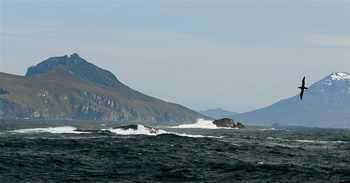 Hiking
the coast trail in spectacular Tierra del Fuego
National Park, we’ll experience the wildlife magic
of the subantarctic Magellanic beech forest.
Our sea-based expedition begins aboard the Chilean ship Mare Australis. Our 3-day voyage
promises far greater comforts than Darwin
experienced aboard the Beagle. We’ll travel
through the Beagle and Murray channels and
spend our days cruising the glacier-carved fjords
of the Tierra del Fuego archipelago. We’ll
explore and hike in Garibaldi and Pia fjords
and navigate through spectacular Glacier Alley.
Weather permitting, we’ll sail across Nassau
Bay to Cape Horn National Park. Landing at
Islas Hornos, we’ll climb to the monument at the
Cape Horn summit. At Wulaia Bay, where Darwin
landed in 1833, we’ll visit a former Yámana
aboriginal settlement and hike through another
stunning forest. To experience—by ship, Zodiac,
and on foot—the dramatic fjords, magnificent
glaciers, tumbling waterfalls, and verdant beech
forests of Tierra del Fuego is an unparalleled
opportunity. Disembarking at Ushuaia, we fly
back to Buenos Aires, spending our final night
celebrating our voyage In Darwin’s Footsteps! Hiking
the coast trail in spectacular Tierra del Fuego
National Park, we’ll experience the wildlife magic
of the subantarctic Magellanic beech forest.
Our sea-based expedition begins aboard the Chilean ship Mare Australis. Our 3-day voyage
promises far greater comforts than Darwin
experienced aboard the Beagle. We’ll travel
through the Beagle and Murray channels and
spend our days cruising the glacier-carved fjords
of the Tierra del Fuego archipelago. We’ll
explore and hike in Garibaldi and Pia fjords
and navigate through spectacular Glacier Alley.
Weather permitting, we’ll sail across Nassau
Bay to Cape Horn National Park. Landing at
Islas Hornos, we’ll climb to the monument at the
Cape Horn summit. At Wulaia Bay, where Darwin
landed in 1833, we’ll visit a former Yámana
aboriginal settlement and hike through another
stunning forest. To experience—by ship, Zodiac,
and on foot—the dramatic fjords, magnificent
glaciers, tumbling waterfalls, and verdant beech
forests of Tierra del Fuego is an unparalleled
opportunity. Disembarking at Ushuaia, we fly
back to Buenos Aires, spending our final night
celebrating our voyage In Darwin’s Footsteps!
Price: $12,995 (includes a $1,000 deposit)
Group Size: 14 Trip Rating: 2
Price includes: 18 days/17 nights, including all
hotel/airport transfers, all ground transportation,
all lodging, 3-day cruise in Tierra del Fuego
(Mare Australis), all meals, services of 5 guides,
all local guides/lecturers, all national park and
museum entrance fees, and all gratuities.
Does
not include roundtrip airfare to Buenos Aires
from your point of departure (overnight
flights depart US on 11/5 and arrive BA on 11/6;
return flight from BA leaves on 11/22 and arrives
in the US on 11/23), internal flights/airport taxes
(≈$800), or trip insurance. Trip cost is based on
double occupancy; single accommodations are not
available for this trip. |
